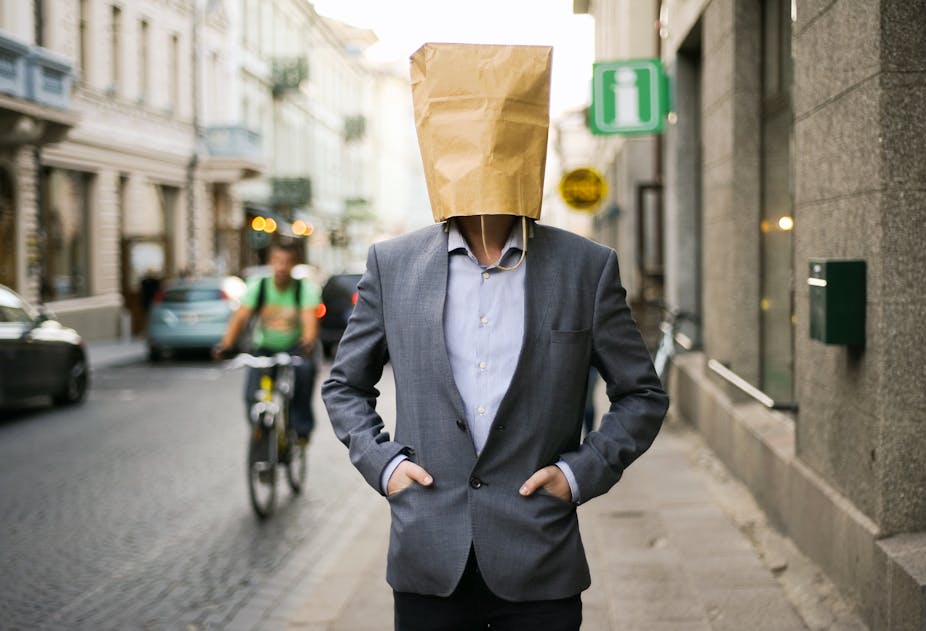Every day, we often scan hundreds of faces, instantly recognising those we know. It’s an innate ability that we rarely think about, and in some ways take for granted. But not everyone has this skill: those with a condition called prosopagnosia – also known as “face blindness” – are simply unable to recognise others by their faces.
Throughout years of research into the condition, I have met many people from all walks of life who suffer from face-blindness. I met Tiffany, for example, in Sydney, Australia. She told me about the earliest experience of prosopagnosia she could remember:
I was about seven years old. There was a low footbridge which my siblings and I crossed to get from our home to school. It had been washed away during heavy rain, so we were forced to walk about 2km to another bridge.
A man driving past stopped and offered us a lift. My siblings accepted, but I refused as I thought he was a stranger. It turned out he was the priest at the church we all attended each week. I had known him for two years – I did not recognise him because he was in normal clothes.
As you might expect, living in a world where “all faces look the same” can lead to a multitude of daily struggles, forcing sufferers to avoid certain situations out of fear they won’t be able to recognise familiar people.
Facial recognition is not something that humans learn, rather it is something we are born with. But face-blind sufferers can develop their own coping mechanisms to overcome any problems the condition may cause. They might focus on extra-facial cues such as hairstyle, gait, clothing and jewellery; or on some distinctive facial features such as bushy eyebrows, a big nose, or a face mole instead. What they cannot apparently do is perceive a face as a whole, as a “holistic” stimulus.
Learning to recognise
Though prosopagnosia, and super recognition at the other end of the spectrum, are now the subject of much research, the disorder is documented as far back as the time of the ancient Greeks. Early descriptions of serious face recognition difficulties come from soldiers injured in the Peloponnesian War.
These historical cases, along with the many others that have been reported much more recently, are cases of acquired prosopagnosia. They describe a form of prosopagnosia that follows a brain injury such as a stroke or head trauma. We now know, however, that prosopagnosia can also exist in people, like Tiffany, who have not been affected by any brain lesion. This second form of prosopagnosia is known as congenital, or developmental, prosopagnosia (CP). CP is not as rare as you might think either: it affects around 2-2.9% of the general adult population – around 1.5m people in the UK alone.
Our ability to recognise people by their faces is mediated by clusters of neurons that form “face processing areas” in the posterior part of the brain. Our own research has demonstrated that these areas in the brains of those with CP work in an atypical way, and do not properly discriminate face from non-face stimuli.
Despite many researchers working to find the causes of CP, we still don’t have a single concrete reason for explaining why these anomalies are present – but we are working on it. Evidence has shown that that, overall, our ability to recognise faces has a strong genetic component, and that CP runs in families. This suggests that CP may be a genetic condition.
So what can we do to help prosopagnosia sufferers? It is not as simple as sitting someone down to “learn” facial recognition. Though research has found that face-blindness can be improved with training, there is no simple “cure”.
Our team recently adopted “neuromodulation” to test whether human face recognition can be improved. This is a neuroscientific technique that involves delivering a very small (undetectable) current through the scalp via two small sponge electrodes. We have demonstrated that neuromodulation actually leads to improved face-processing skills, and though it is no a “cure”, it does suggest the potential of this approach in future studies aimed at treating CP.
One of our team’s main goals is to find ways to enhance the face processing skills of those suffering with congenital prospagnosia. However, it is currently very difficult to study CP – although there are a large number of sufferers, a relatively small number of people have been properly diagnosed. This is why we are now launching a new website, working with schools and increasing awareness to encourage those who may suffer from the condition to learn more, and to take part in further research.

